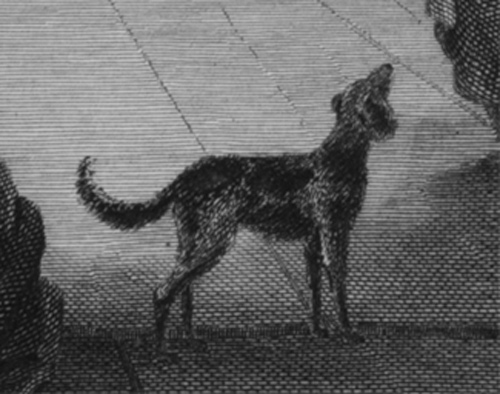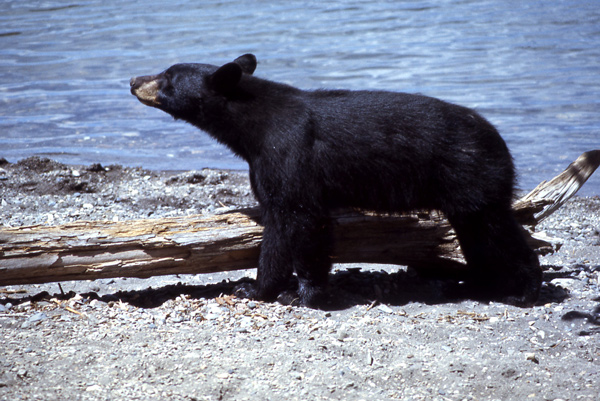Fort Clatsop, Astoria, OR Lewis describes Indian dogs and treats two sick soldiers. He also compares grizzly and black bears.
The Perfect Compliment[1]Originally aired weekdays by Yellowstone Public Radio during the Bicentennial observance of 2003-2006. Narrated by Hal Hansen. Scripts by Whit Hansen and Ed Jacobson. Produced by Leni Holliman. … Continue reading
Common Indian Dogs
The Indian dog is usually small or much more so than the common cur. they are party coloured; black white brown and brindle are the most usual colours. the head is long and nose pointed eyes small, ears erect and pointed like those of the wolf, hair short and smooth except on the tail where it is as long as that of the curdog and streight. the natives do not eat them nor appear to make any other use of them but in hunting the Elk as has been before observed.—
—Meriwether Lewis
Peruvian Bark for Bratton
Bratton is still very weak and complains of a pain in the lower part of the back when he moves which I suppose procedes from dability. I gave him barks.
—Meriwether Lewis
Nitre and Thunderbolts
Gibson‘s fever still continues obstenate tho’ not very high; I gave him a doze of Dr. Rush’s which in many instances I have found extreemly efficatious in fevers which are in any measure caused by the presence of boil [bile?]. the nitre has produced a profuse perspiration this evening and the pills operated late at night his fever after which abated almost entirely and he had a good night’s rest.
—Meriwether Lewis
Comparing Bears
The brown white or grizly bear are found in the rocky mountains in the timbered parts of it or Westerly side but rarely; they are more common below the rocky Mountain on the borders of the plains where there are copses of brush and underwood near the watercourses . . . . the black bear differs not any from those common the United states and are found under the rocky Mountains in the woody country on the borders of the great plains of columbia and also in this tract of woody country which lie between these plains and the Pacific Ocean.
—Meriwether Lewis
Determining the Octant’s Error
By several trials made today in order to adjust my Octant and ascertain her error in the direct observation, I found that it was 2° 1′ 45″ + or additive beyond the fracture; this error was ascertained by a comparison with my sextant the error of which had been previously ascertained.
—Meriwether Lewis
Weather Diary
aspect of the weather at rise
Wind at rise
aspect of the weather at 4 OC1 P.M. Wind at 4 O’Clock P.M. rain after snow & rain S W rain after fair & rain S W but a small quantity of snow nearly all disolved by morning with the succeeding rain. at 11 A. M. it became fair and the insects were flying about. at ½ after 12 O’Ck it again clouded up and began to rain.
—Meriwether Lewis[2]To assist the reader, the editor of this web page has omitted the “Day of ye Month” column and spelled out some abbreviations.
Fort Clatsop is a High Potential Historic Site along the Lewis and Clark National Historic Trail managed by the U.S. National Park Service. The site is managed by the Lewis and Clark National and State Historic Parks.
Notes
| ↑1 | Originally aired weekdays by Yellowstone Public Radio during the Bicentennial observance of 2003-2006. Narrated by Hal Hansen. Scripts by Whit Hansen and Ed Jacobson. Produced by Leni Holliman. © 2003 by Yellowstone Public Radio. |
|---|---|
| ↑2 | To assist the reader, the editor of this web page has omitted the “Day of ye Month” column and spelled out some abbreviations. |




